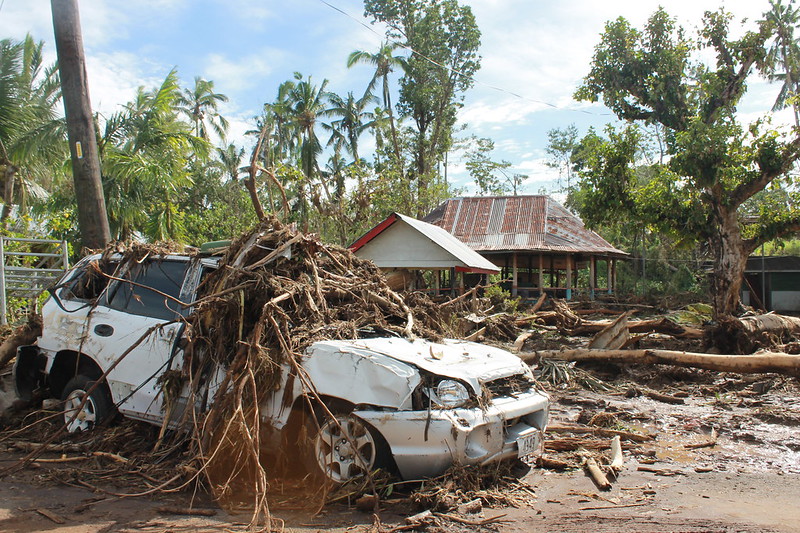Northern Australia needs to be ready to meet climate-change-driven security challenges

Over the coming decades, climate change will have
serious and pervasive impacts on human security across the Indo-Pacific region. From supporting regional disaster-assistance missions to responding to sudden climate-change-related mass migration, Australia’s north will need to be prepared to meet the challenges of a changing climate.
Projections of sea-level rise suggest that mass migration in the Indo-Pacific
will become a fact of life by 2100. But the escalating frequency and severity of natural disasters will likely destabilise the region long before then.
Regional instability will present both short-term and long-term risks for human security in the region.
In the short term, floods and storm surges will pose the greatest threat to local communities and will likely increase the flow of migrants across international borders. Timor-Leste and Indonesia’s Maluku Islands are particularly at risk as they don’t have access to the level of resources and infrastructure that neighbouring islands like Java have.
Cyclone Lili
passed directly through the region in May 2019 and could easily have set in motion a chain of events leading to the evacuation of the hundreds of small islands in the area. Climate change is expected to increase the frequency and severity of these natural disasters, limiting the opportunity for governments to recover from a disaster before the next one hits.
Long-term risks to the region may be less immediate but have potentially even more devastating impacts. Sea-level rise is the most likely driver for climate-change-driven migration in the Indo-Pacific: some island nations are predicted to disappear below sea level in as little as 20 years. A World Bank report has already
called for Australia to begin accepting around 1,300 migrants a year from Tuvalu and Kiribati to avoid a mass forced migration in a couple of decades.
Indonesia is particularly vulnerable to the impacts of climate change and more frequent extreme weather events. While the Pacific islands are more vulnerable, Indonesia has a larger population and is geographically much closer to Australia, so a climate emergency in Indonesia will have a far greater impact on our north.
The country lies in one of the world’s
most natural disaster-prone areas, with an average of 289 significant natural disasters every year. The average annual death toll in Indonesia from such events is 8,000. Many of the more than 260 million Indonesians live close to the coastline.
The nearly 10 million Indonesians living in Jakarta are already dealing with the health and economic impacts of living in a city that’s
sinking. By 2030, 90% of the city is expected to be below sea level. Indonesia is planning to build a new capital in Borneo, but that island is also prone to flooding and storm surges.
Indonesia already
spends around half a billion dollars a year on post-disaster reconstruction. The figure was closer to $7 billion in 2004 following the Indian Ocean tsunami and $2 billion following the 2010 Mount Merapi volcanic eruption.
Climate change is already affecting food production and the availability of fresh water across the Pacific and parts of Southeast Asia. The increasing rate and severity of natural disasters will only speed up that process, rendering many islands across the region
uninhabitable. As one of the leading economies in the region, Australia will be called on to help address this problem, and we are nowhere near ready to respond.
In the likely event of sudden climate-induced migration, the Northern Territory will need to be Australia’s first line of response to humanitarian crises. However, with one of the least developed infrastructure systems of any state or territory, the NT is woefully underprepared for the magnitude of future climate crises.
Australia’s north needs to be better prepared for the coming climate emergency.
We need to start with investing more in training humanitarian and defence teams to react to climate disasters. These teams will also need to be ready to deploy to our neighbours to help maintain stability and security in the region. Overseas deployment will be crucial for Australia to maintain its international standing and influence and to be a leader in Pacific security. The Department of Defence would be well advised to continue to invest in preparing Darwin and Tindal airbases to support response operations.
Australia should invest early in the necessary infrastructure in the Northern Territory to ensure it is ready for future climate-driven migration and extreme weather events. Darwin, despite its recent success in dealing with Australians evacuated there at the beginning of the coronavirus outbreak, needs further infrastructure investment to ensure it is ready for future climate-driven migration and extreme weather events.
Australia also needs to work closely with other Indo-Pacific nations to help prepare them for future environmental challenges.
 Print This Post
Print This Post